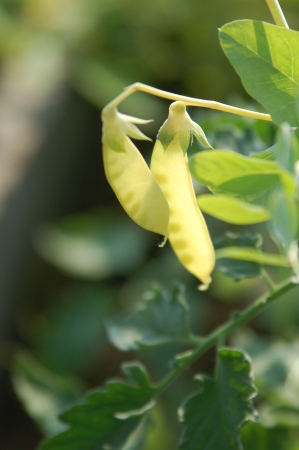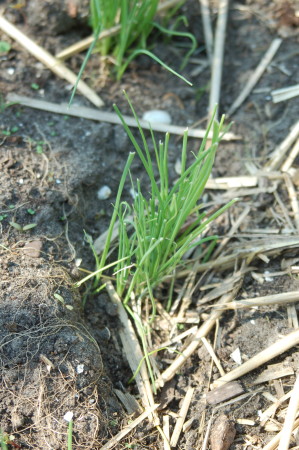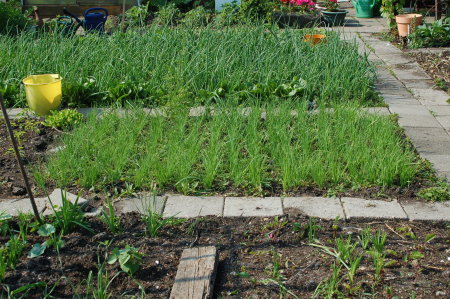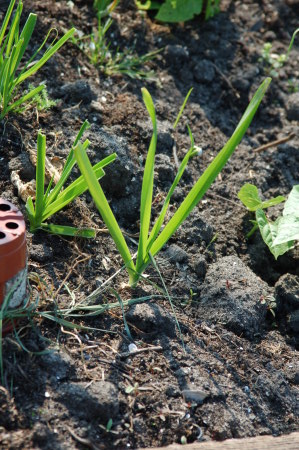I’ve made several posts lately about perennial onions, which I really like. There is also a type of perennial leek called Babington’s Leek. While the plants right now have sent up a flower stalk or scape, so I assume it can be propagated that way, the plants also form roots that look very similar to a bulb of garlic and can be broken apart and replanted.
It’s not uncommon for me to receive the same plant from two different sources, for example because I make a mistake on a seed order or someone gives me a ‘free’ packet of seeds or plant as a gift. That’s what happened here in a way, about a week apart I first got some Babington’s Leek from Lieven, then Søren sent me some as a ‘free gift’ together with some other things he sent me.
The world of plant trading is very small here in Europe, so I assumed 2 or 3 generations back these must have originally come from the same person, but at the same time they looked different so I decided to plant them in separate spots and compare them.
I’m sorry, they are growing in and amongst my garlic and the straw background makes them hard to photograph clearly.
This is Søren’s Babington’s Leek:
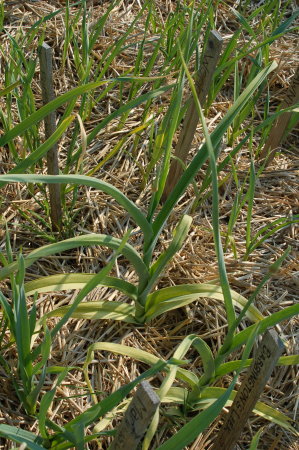
and this is Lieven’s:

The main difference is Søren’s plants have a slight yellow color, and the leaves are more horizontally extended. Lieven’s is a darker green color and looks more like a small normal leek.
We had one of Lieven’s leeks for dinner tonight in a salad:
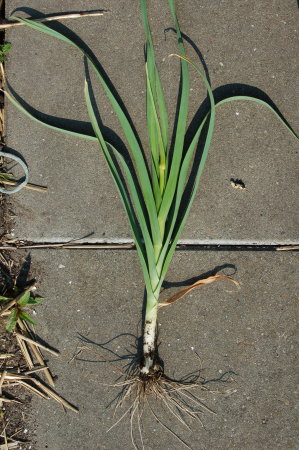
It’s a little hard to see in this picture, but the end is a little swollen probably because it is forming root divisions.
The taste was very nice, and much like a standard leek.
If propagation is only possible from root divisions, it’s going to take a long time before I have a reasonable number in my garden. I think Søren’s only forms two divisions, and Lieven’s four or five.
In a conversation about a year ago Lieven mentioned he sometimes comes across root divisions in standard leeks, so perhaps it’s not strange that Søren and Lieven would send me different varieties of Babington’s Leek, because perhaps it’s a common trait but modern varieties have just been selected for not dividing at the root. Maybe there are lots of varieties around. Is anyone else growing this? It might be interesting to trade.


